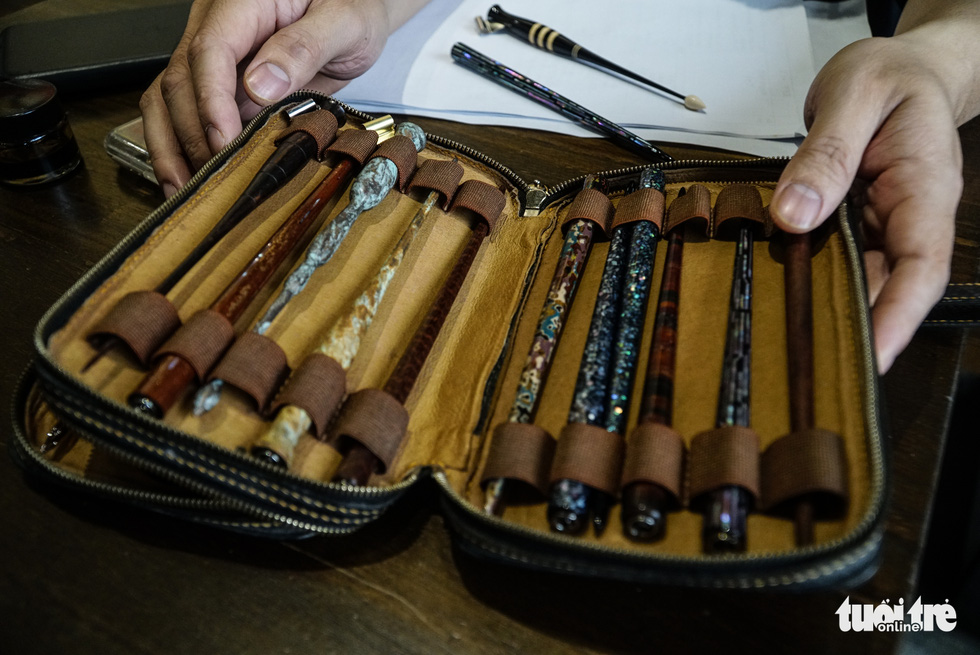With an endless passion for the art of words, Dao Huy Hoang, from Hanoi, has spent nearly a decade creating remarkable calligraphy pens.
Hoang, who was born in 1993, has been fascinated by calligraphy since he was a student at Hanoi Foreign Trade University.
Hoang spent more than two years teaching himself calligraphy handwriting, but the most difficult part was a lack of professional tools.
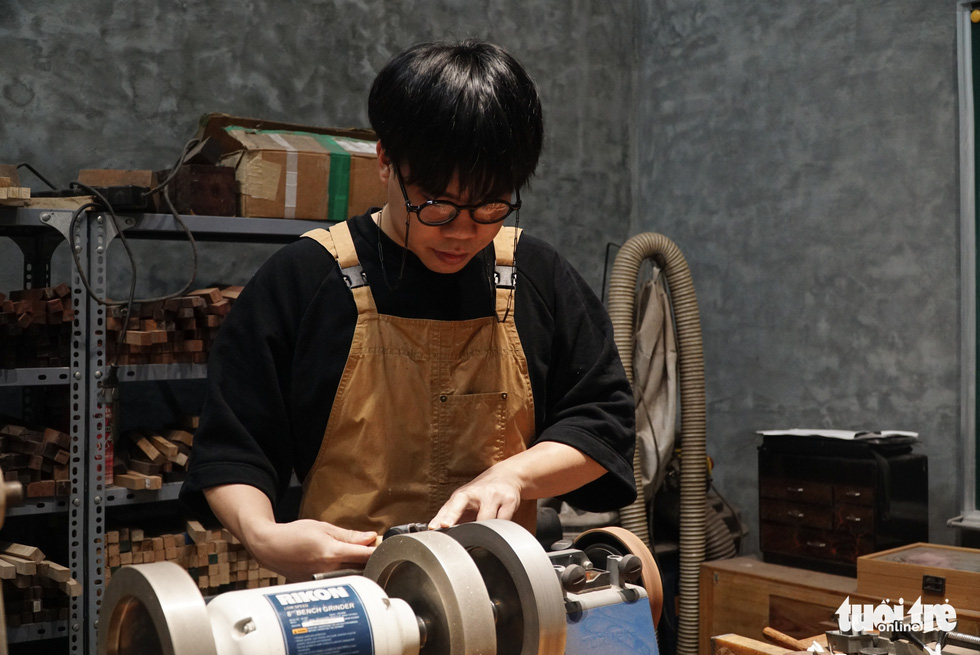 |
| Dao Huy Hoang carves a timber block to make a calligraphy pen at his workshop in Hanoi. Photo: Nguyen Hien / Tuoi Tre |
"In 2013, I began making my own pens because the calligraphy pens I purchased from overseas were quite expensive," Hoang explained.
"I keep in mind that when I was a university student, I could only earn VND600,000 [U$26.1] per month and had to spend VND550,000 [$24] on a calligraphy pen.
"I then had the idea of making my own pens because there is wood material in Vietnam and I can learn how to make calligraphy pens on YouTube.
"I took a gamble and borrowed VND7 million ($305) from my brother, which was a fortune for me at the time, to buy an old wood lathe.
“I began making calligraphy pens without having any experience with wood carving."
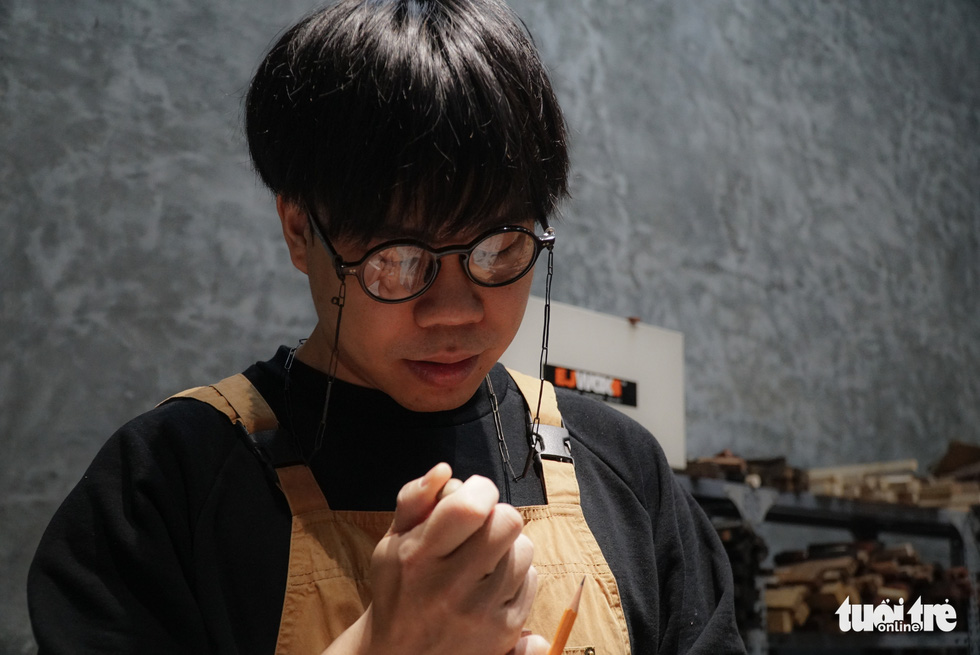 |
| Dao Huy Hoang is seen making a calligraphy pen at his workshop in Hanoi. Photo: Nguyen Hien / Tuoi Tre |
Hoang encountered his first challenge when he realized that making a calligraphy pen was not as simple as he had seen on YouTube.
After purchasing his first wood lathe, Hoang faced a number of problems, including a lack of knife-grinder and wood carving knives as those tools must be bought in another country.
Hoang had to travel from Hanoi to the trac wood village in neighboring Bac Ninh Province to find and buy wood materials. Previously, he ordered wood in Hanoi but was unable to use it.
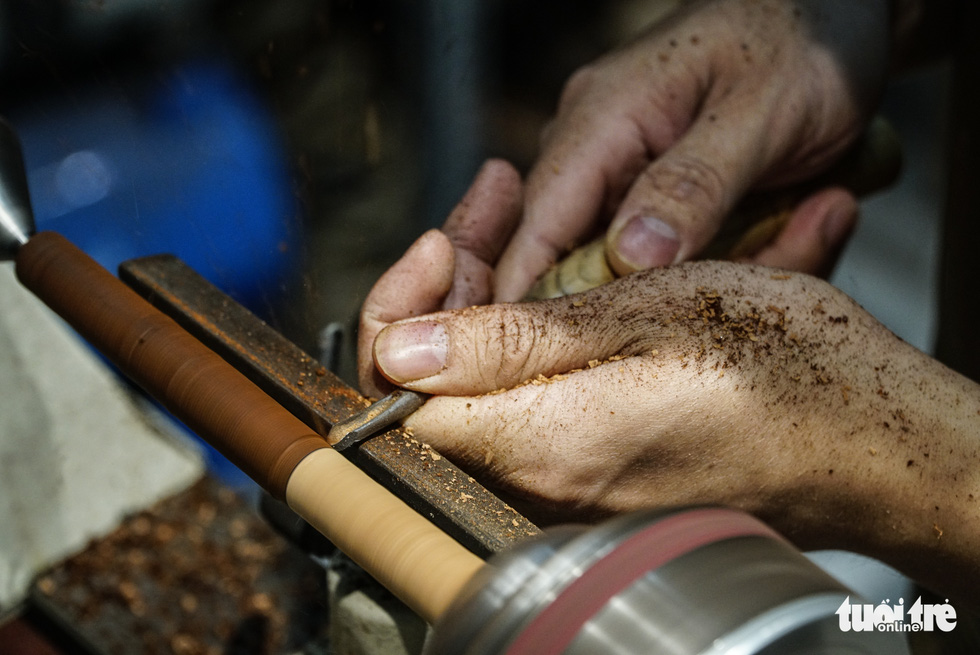 |
| Dao Huy Hoang carves a timber block to make a calligraphy pen at his workshop in Hanoi. Photo: Nguyen Hien / Tuoi Tre |
Hoang finally created his first calligraphy pen from a piece of African coralwood after more than a year of tinkering. Currently, he retains this pen as a memento.
"For a beginner, the most difficult part is carving a soulful pen," Hoang shared.
"It took me a year to complete my first calligraphy pen, but it took me five years of consistent practice to develop my own unique and beautiful pen curves.
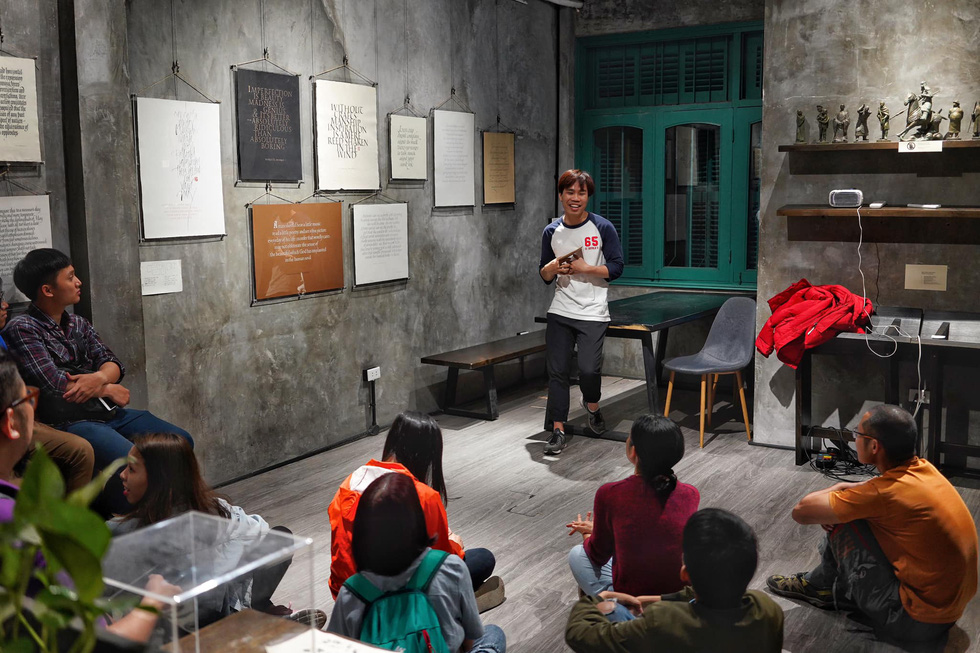 |
| Dao Huy Hoang makes a speech at his first solo exhibition in 2019. Photo: Supplied. |
“At one point, I worked nonstop from 8:00 am to 11:00 pm, except for lunch and dinner.
“After overcoming one challenge, another more difficult one appears. That is the stage where I have to paint the pen to make it smooth and spotless.
“There are a variety of difficulties that vary according to one's level of knowledge about the profession.”
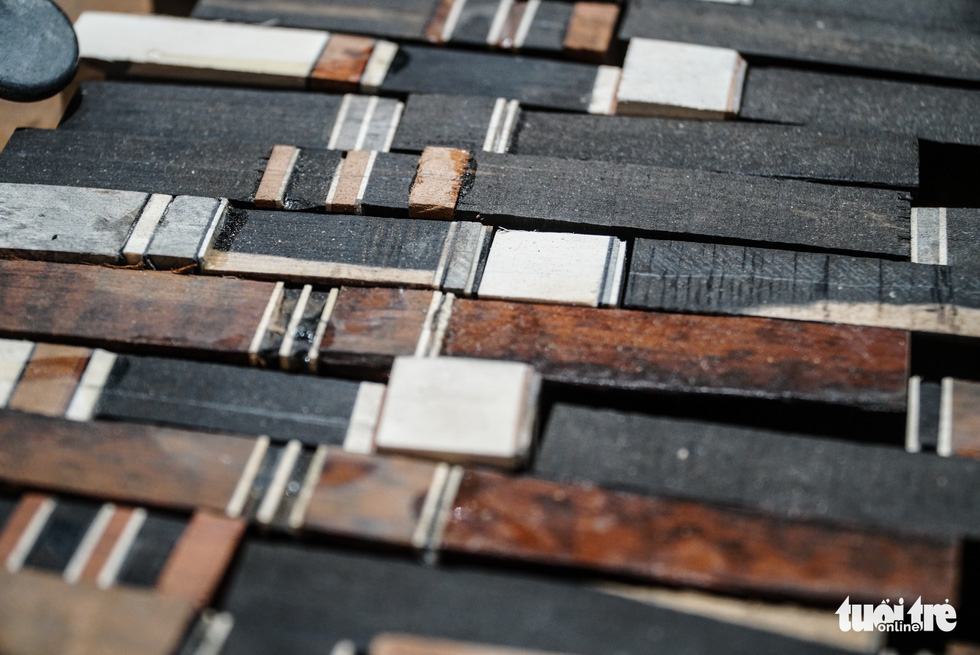 |
| The wood materials used to create calligraphy pens at Dao Huy Hoang’s workshop in Hanoi. Photo: Nguyen Hien / Tuoi Tre |
Currently, there are blocks of different woods waiting to be used to make calligraphy pens in Huy Hoang's workshop in an alley on Thai Ha Street.
There are numerous types of wood in Vietnam, but some must be imported from other countries due to the variety of colors found in temperate countries' wood.
Each pen is a work of art created by the makers.
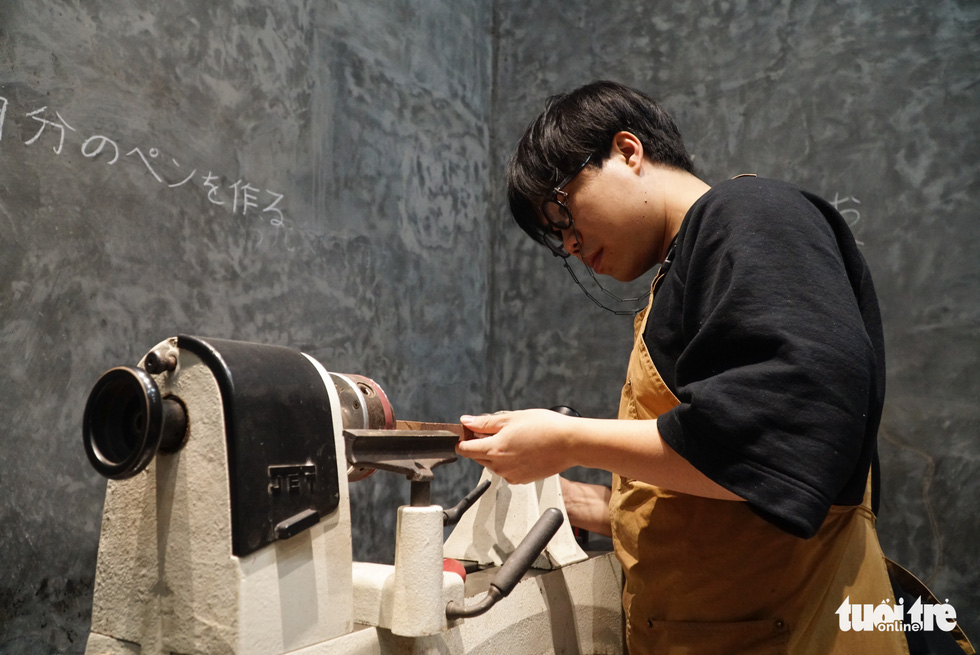 |
| In the photo, Dao Huy Hoang is seen making a calligraphy pen at his workshop in Hanoi. Photo: Nguyen Hien / Tuoi Tre |
The simplest calligraphy pen requires approximately three hours to complete. However, Japanese lacquer painting pens require two to three months to finish.
The addition of oriental elements such as Vietnamese lacquer and Japanese lacquer into the production process distinguishes and elevates Hoang's calligraphy pens.
Each calligraphy pen made by Hoang costs between VND1.5 million ($65.5) and VND3 million ($131), while the more advanced ones fetch from VND10 million ($436.7) to VND15 million ($655).
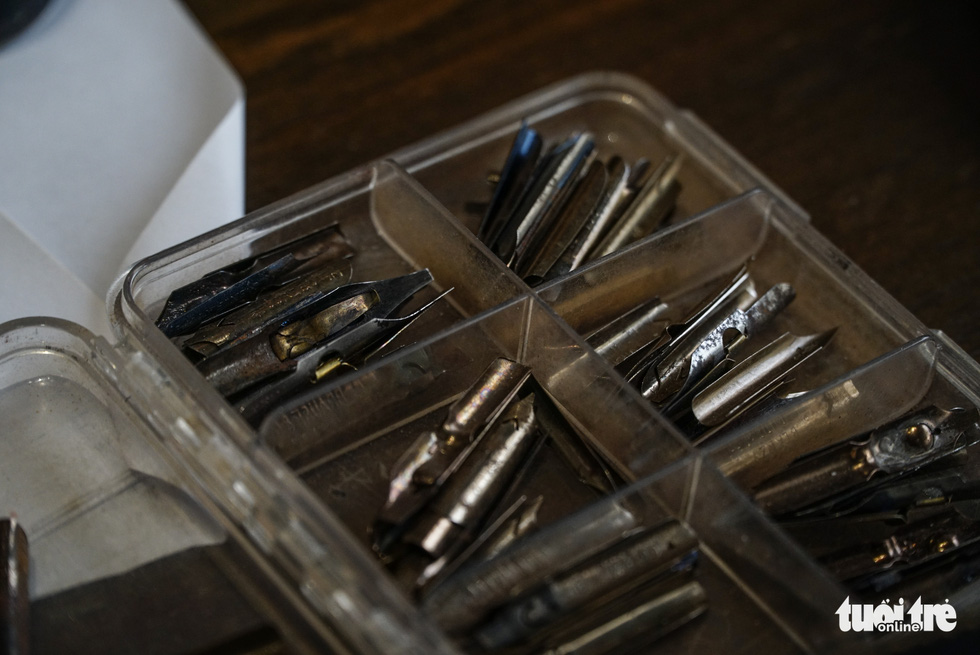 |
| Hoang uses numerous nibs for each type of writing. Photo: Nguyen Hien / Tuoi Tre |
Before the COVID-19 pandemic hit Vietnam, Hoang was frequently invited to lecture at workshops on calligraphy and pen making throughout the world.
According to Hoang, he is always willing to teach the profession to any youngster who demonstrates an interest in this art form.
“I had intended to hold a solo exhibition in 2021 to commemorate my tenth year of calligraphy. However, due to the COVID-19 pandemic, I was forced to postpone it.
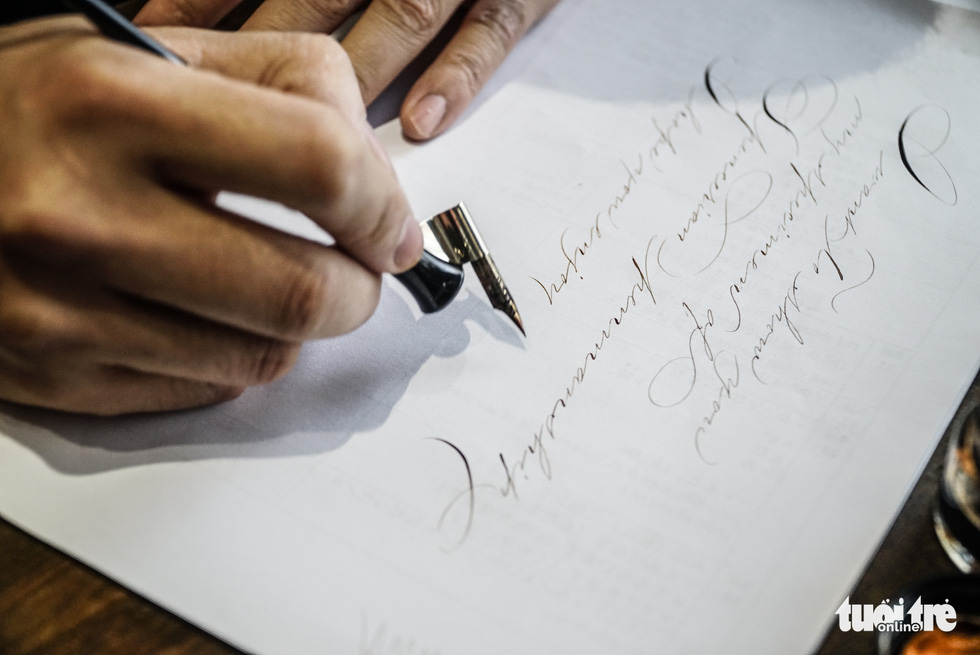 |
| Dao Huy Hoang practice calligraphy handwritting at his workshop in Hanoi. Photo: Nguyen Hien / Tuoi Tre |
“In 2022, I intend to hold an exhibition divided into three sections: calligraphy, pen making, and lacquer.
“Through my story, I hope to tell everyone that sometimes working in a niche market can be interesting, encouraging people to discover more about themselves.
“Additionally, I want to spread this art form to anyone who is a word aficionado,” Hoang said.
Like us on Facebook or follow us on Twitter to get the latest news about Vietnam!



